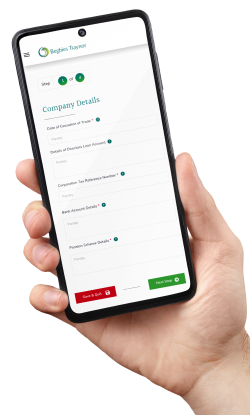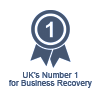Bankruptcy is a state of insolvency; that is, when liabilities (debts) exceed assets, or when bills cannot be paid on time or in full. Although a business is often described as being bankrupt when it is experiencing this type of financial distress, in actual fact, it is only individuals (including self-employed sole traders), who can be bankrupt. When it comes to a limited company, rather than being described as bankrupt, they are said to be insolvent.
Concerned about the National Insurance increase?
For the 2024-25 tax year, the rate of employer National Insurance increases from 13.8% to 15% adding yet more pressure onto already squeezed cash flows. If you are worried about the impact this could have on your company’s finances, talk to the experts at UK Liquidators. As licensed insolvency practitioners we can explain your options and help you plot a way forward. Call today on 0800 063 9262.
There are two tests which can determine whether your limited company is indeed insolvent. The first is the balance sheet test. This involves adding up your total amount of liabilities – that is money you owe to creditors – and weighing this against the assets of the company which may include stock, property, cash at bank, and the debtor book. If debts exceed assets then the company can be said to be insolvent.
The second test is the cash flow test. This checks whether your company is able to pay its bills and other overheads on time and in full on a monthly basis. Struggling with squeezed cash flow is often the trigger point for directors realising their company is in a financially distressed position. If you fall into arrears, this situation can quickly snowball as creditors become increasingly aggravated and their threats become more serious. If you ignore the position you are in at this point you could find yourself being forced into compulsory liquidation when creditor patience runs out.
Liquidation Portal
For Company Directors

If you are worried that your business could be in danger of going bust as a result of being bankrupt, your first port of call should be to enlist the help and advice of a licensed insolvency practitioner. They will be able to ascertain whether your company is indeed insolvent, and if so, they will talk you through the options available to you and explain what each one would mean for your company, your employees, and also your creditors.
Just because your company is facing the prospect of bankruptcy does not mean it is beyond rescue. There are a range of formal and informal process which could pull your company back from the brink. These include informal negotiations with creditors, through to insolvency processes such as administration and Company Voluntary Arrangements which are designed to help rescue a struggling business.
In some cases, a business will not be able to be saved. When this happens, the company may need to be placed into a formal liquidation process. A director can choose to do this voluntarily through a Creditors’ Voluntary Liquidation (CVL), a process which brings about the end of an insolvent company by facilitating an orderly winding down of its affairs.
A CVL can only be entered into under the guidance of a liquidator who must be a licensed insolvency practitioner. Once appointed, the insolvency practitioner will be responsible for a number of things including identifying any company assets which can be sold, distributing the available funds to creditors according to a set hierarchy, as well as ensuring the company’s name is removed from the Companies House register.
Following liquidation, the company will no longer exist as a legal entity, and due to this any debts which remain will be written off unless these have been previously secured with a personal guarantee. If a personal guarantee has been provided, this will crystalise at the point of liquidation and responsibility for repaying this loan or other finance agreement will shift from the company to the director who signed the guarantee. If you have provided a personal guarantee for company borrowing, speak with your insolvency practitioner before placing the company into liquidation to understand how this will affect your personal financial position.
Start your online liquidation today
If you have decided liquidation is the right option for your limited company, you can take the first step and begin the process online using our online portal. Starting the process is quick, simple, and can be done at a time that suits you. Your information will be submitted to your local UK Liquidators insolvency practitioner who will be with you every step of the way. Click here to start your company’s liquidation online.
If you believe your company is bankrupt – or is heading that way – taking swift advice from a licensed insolvency practitioner should be a priority. At UK Liquidators, we offer a free no-obligation consultation to limited company directors dealing with financial distress. During this consultation, you can explain the problems you are facing and receive expert advice on what your options are and the most appropriate next step. Contact the UK Liquidators team today.
By completing the test, you will receive:
If you are considering liquidation for your company, taking expert advice at an early stage is crucial. At UK Liquidators, our team of licensed insolvency practitioners are committed to providing limited company directors with the help and advice they need to make an informed decision.




Looking for immediate support?
Complete the below to get in touch